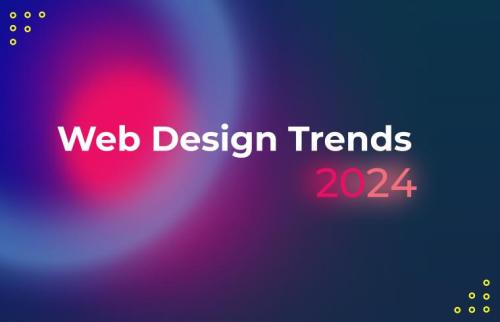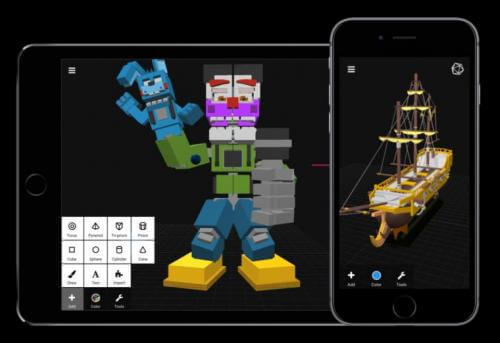
Crafting Inclusive Interfaces: Building Accessible Designs for All
In today's digital landscape, where connectivity is king and online experiences reign supreme, the demand for inclusive design has never been more pressing. Inclusive design, a concept rooted in the belief that products and environments should be accessible to everyone regardless of age, ability, or circumstance, lies at the heart of creating user interfaces (UI) and user experiences (UX) that resonate with diverse audiences. As we delve into the principles and practices of inclusive design, we uncover not only the ethical imperative but also the business benefits of designing for inclusivity.
At the core of inclusive UI/UX design for mobile apps and websites is a deep understanding of the varied needs and abilities of users. It's about more than just aesthetics; it's about functionality and usability. Consider the individual navigating your mobile app with a screen reader, or the user with motor impairments relying on alternative input methods. By embracing inclusivity from the outset, designers can ensure that their creations cater to these diverse users seamlessly.
Successful projects in inclusive design serve as beacons of inspiration and innovation. Take, for instance, the mobile app that employs intuitive navigation and clear, concise language, ensuring ease of use for users with cognitive disabilities. Or the website with customizable font sizes and color contrast options, empowering users with visual impairments to tailor their experience according to their needs. These examples underscore the power of thoughtful design in fostering inclusivity and enhancing user satisfaction.
So, how can designers embark on the journey of crafting universally accessible interfaces? It begins with a commitment to empathy and user research. Engage with individuals representing a spectrum of abilities and circumstances to gain insights into their unique challenges and preferences. Conduct usability testing with diverse participants to identify pain points and iteratively refine the design based on feedback.
Best marketplaces for designers
Furthermore, embrace standards and guidelines such as the Web Content Accessibility Guidelines (WCAG), which provide a framework for creating accessible digital experiences. Prioritize semantic HTML, implement keyboard navigation support, and ensure compatibility with assistive technologies to enhance accessibility.
Understanding how inclusive UI/UX design differs from standard design practices is crucial in appreciating its impact and necessity. Let’s explore some examples that illustrate the nuances and benefits of adopting an inclusive approach in design, compared to more traditional methodologies.
Example 1: Sign-Up Forms
Traditional Design:
A standard sign-up form might focus primarily on aesthetics, featuring small, stylized fonts and high-color contrast ratios that can be challenging for users with visual impairments. It often requires users to navigate multiple steps without providing clear error messages, which can be frustrating for users with cognitive disabilities.
Inclusive UI/UX Design:
An inclusive sign-up form incorporates larger, legible fonts and sufficient color contrast to accommodate users with visual impairments. It simplifies navigation by reducing the number of steps needed to complete the form and uses real-time validation to provide immediate and easy-to-understand feedback. This helps users with cognitive disabilities understand errors they might have made without feeling overwhelmed.
Programmer's Day 2024
Example 2: E-Commerce Website Navigation
Traditional Design:
A conventional e-commerce website might use complex menus with multiple layers and hover-dependent dropdowns, which can be difficult to navigate for users who cannot use a mouse or have limited fine motor skills.
Inclusive UI/UX Design:
In contrast, an inclusive e-commerce site would feature a simpler, more streamlined navigation structure that is easy to access using both keyboard and voice commands. It might include well-defined categories with clear labels and offer alternative navigation methods like voice search or large tap targets, which accommodate users with motor impairments and those using mobile devices.
Example 3: Video Content on a Streaming Platform
Traditional Design:
Typical video content might only offer standard audio and visual components, assuming that all users can hear and see the content without difficulty, potentially excluding those with hearing or visual impairments.
Inclusive design is not a one-size-fits-all approach; it's an ongoing process of iteration and improvement. Continuously gather feedback from users, monitor analytics, and adapt the design to better serve the needs of your audience. By fostering a culture of inclusivity within your design practice, you pave the way for innovation and impact.
In conclusion, the realm of UI/UX design for mobile apps and websites presents boundless opportunities to champion inclusivity. By embracing the principles of inclusive design and leveraging best practices, designers can create interfaces that transcend barriers and empower users of all abilities to engage meaningfully with digital content. Let's embark on this journey together, forging a future where accessibility is not an afterthought but a fundamental aspect of design excellence.
Recent Articles
- A Case Story: How Academic Research Helped Predict Software Failures Before They Happened Every software team has faced this mom
- Happy New Year 2026
- Behavioural Design as a UX Trend in Mobile Apps for 2026
- MyCountdown — a personal event tracker for iOS
- Why Quality Assurance Is the Unsung Hero of Web Development


